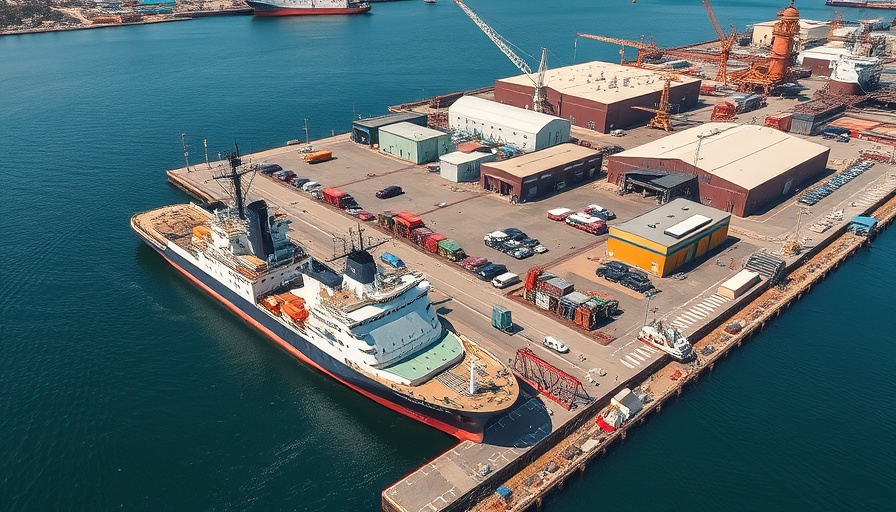
Breaking Ground on the Future of Icebreaking
In a significant development for the American shipbuilding industry, Davie Defense Inc. has introduced plans for a state-of-the-art American Icebreaker Factory at the historic Gulf Copper shipyard in Galveston, Texas. This ambitious project, estimated to cost around $1 billion, is poised to not only spur economic growth in the region but also enhance the nation's capabilities to deploy modern icebreakers—vital for operations in Arctic waters.
Investment and Job Creation: A Boon for the Economy
The American Icebreaker Factory will come as a crucial boost to the local economy, with Davie Defense forecasting a direct support of over 2,000 skilled jobs. Furthermore, the project is expected to create upwards of 7,000 jobs across the supply chain, contributing to a sustainable employment landscape. This projection follows an independent study commissioned by Davie Defense, highlighting the factory's potential to invigorate a regional labor market that benefits from increased maritime activity.
Strengthening National Security Through Shipbuilding
As geopolitical tensions rise, the need for robust naval capabilities is clearer than ever. The development of the American Icebreaker Factory is integral to this strategy, as the facility will manufacture Davie’s Arctic Security Cutter (ASC)—a proven fourth-generation platform that has been optimized for polar operations. Already, seven vessels of this kind are in service, highlighting its readiness to meet all U.S. Coast Guard (USCG) mission requirements.
Collaboration and Innovation: A Modern Approach to Shipbuilding
Davie’s partnership with Miami-based Pearlson Shiplift marks a pivot towards innovative and efficient shipbuilding practices. Pearlson brings significant experience in leading projects for major American shipbuilders, infusing the factory with an array of advanced manufacturing techniques. By transferring Finland's extensive icebreaker know-how, Davie aims to expedite the production of new ASCs tailored to meet evolving national defense needs.
Looking Ahead: A Vision for the Future of Icebreakers
The timeline for the first ASC is ambitious, with Davie aiming for delivery in just 26 months. This quick turnaround is made possible by previous construction works, as the company has successfully built the ASC hull multiple times. Such efficiency in shipbuilding is crucial to upholding U.S. interests in the Arctic, ensuring that naval forces can operate effectively in challenging environments.
Conclusion: More Than Just a Factory
The establishment of the American Icebreaker Factory represents more than just a facility for manufacturing vessels. It embodies a strategic initiative aimed at enhancing the U.S.'s maritime capabilities and securing its interests in polar regions. As the factory rises, it promises economic revitalization for Galveston and beyond, positioning both Davie Defense and America on the cutting edge of maritime technology.
For those following developments in American shipbuilding, Davie Defense's endeavors thus far lay the groundwork for a pivotal shift. To stay informed about future advancements and opportunities in this sector, continue to engage with local and national maritime news as the story unfolds.
 Add Row
Add Row  Add
Add 




Write A Comment